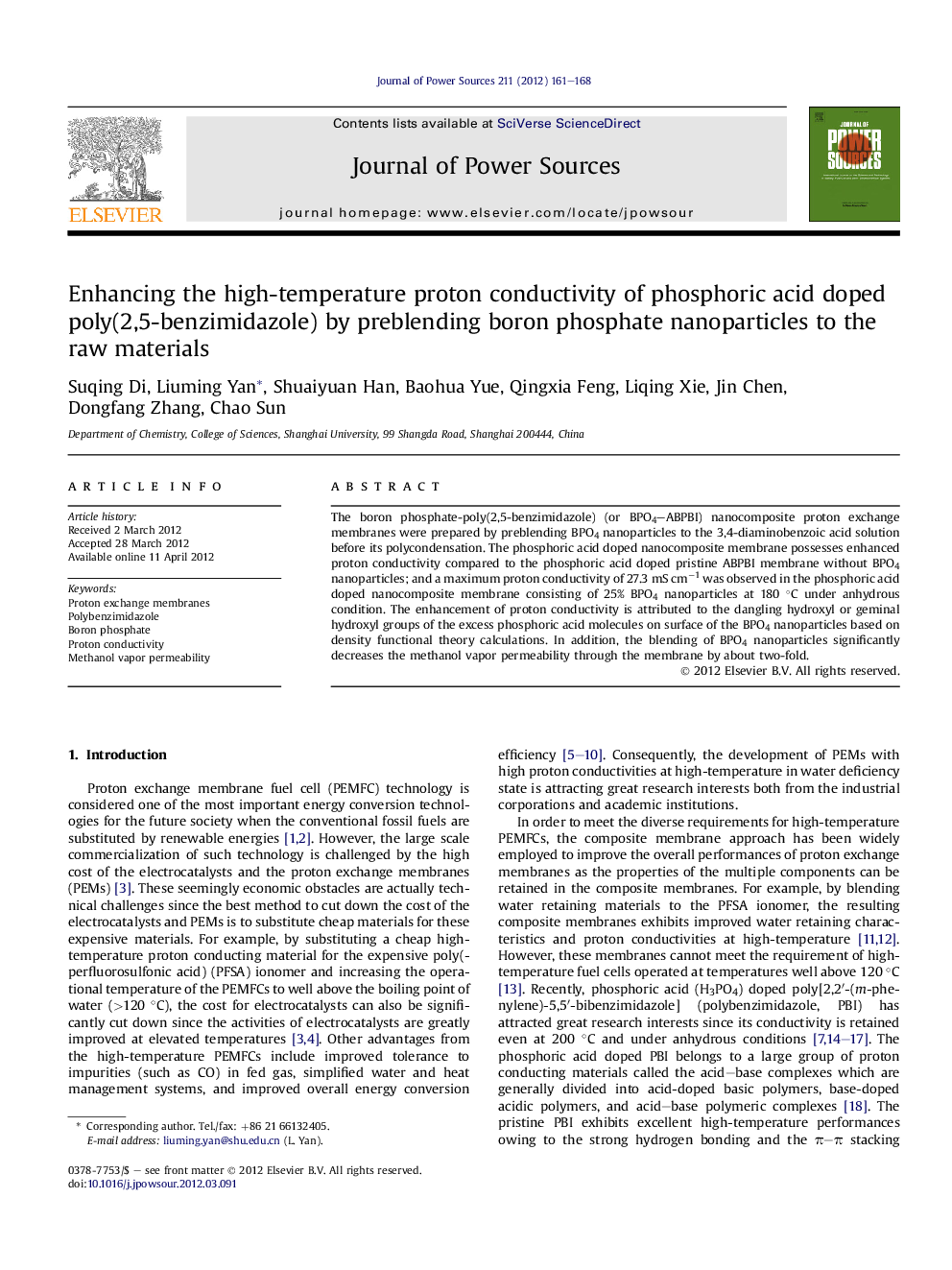| Article ID | Journal | Published Year | Pages | File Type |
|---|---|---|---|---|
| 1284521 | Journal of Power Sources | 2012 | 8 Pages |
The boron phosphate-poly(2,5-benzimidazole) (or BPO4–ABPBI) nanocomposite proton exchange membranes were prepared by preblending BPO4 nanoparticles to the 3,4-diaminobenzoic acid solution before its polycondensation. The phosphoric acid doped nanocomposite membrane possesses enhanced proton conductivity compared to the phosphoric acid doped pristine ABPBI membrane without BPO4 nanoparticles; and a maximum proton conductivity of 27.3 mS cm−1 was observed in the phosphoric acid doped nanocomposite membrane consisting of 25% BPO4 nanoparticles at 180 °C under anhydrous condition. The enhancement of proton conductivity is attributed to the dangling hydroxyl or geminal hydroxyl groups of the excess phosphoric acid molecules on surface of the BPO4 nanoparticles based on density functional theory calculations. In addition, the blending of BPO4 nanoparticles significantly decreases the methanol vapor permeability through the membrane by about two-fold.
Graphical abstractThe sponge-like morphology of H3PO4 doped BPO4–ABPBI guarantees the formation of continuous H3PO4 subphase, maximum contact between H3PO4 and the membrane matrix.Figure optionsDownload full-size imageDownload as PowerPoint slideHighlights► Proton exchange membrane is based on H3PO4 doped BPO4–ABPBI nanocomposite. ► H3PO4 doped BPO4–ABPBI nanocomposite possesses 3-D network morphology. ► Blending BPO4 to ABPBI improves the proton conductivity. ► The maximum proton conductivity is 27.3 mS cm−1.
